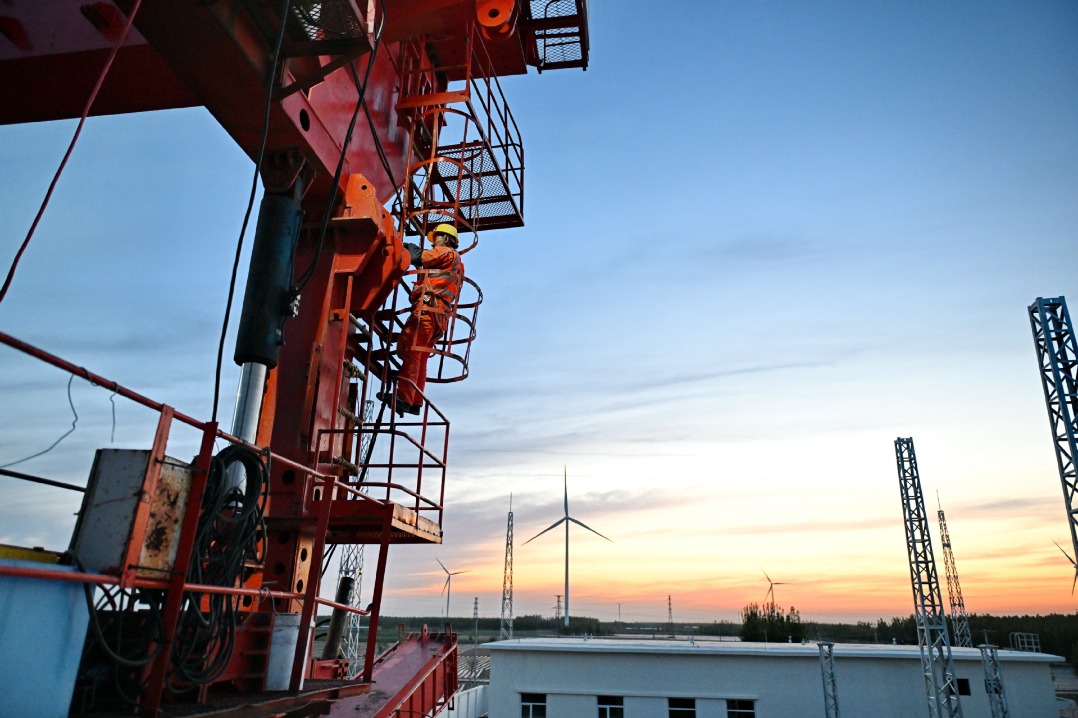Nation to invest more in infrastructure projects

Infrastructure investment is expected to grow in China to serve the nation's efforts in stabilizing domestic demand amid global trade tensions that threaten its export growth, market insiders said.
Trade turbulence triggered by the United States' tariff strategy is affecting not only global supply chains on a scale unexpected by the market, but also overall external demand, where China has to step up its macroeconomic moves to hedge against the impact by largely expanding domestic demand to keep its economy on a steady track, said Long Chaocan, an investment consultant with China Galaxy Securities.
"On the one hand, the multilateralism that China sticks to acts as a cushion against the trade disruptions by the US, which, though it used to be a major global market for China, is being replaced by other trading partners. On the other hand, China has adequate tools to enhance the driving force of investment, which has been acting as another major economic driver as trade."
Supported by the nation's previously unveiled fiscal moves, including the issuance of the ultralong treasury bond and expanded local government special bond, investment into infrastructure projects nationwide has been on the rise since the beginning of this year. According to the National Bureau of Statistics, infrastructure investment rose 5.8 percent year-on-year in the first three months.
Specifically, with an uptrend of the infrastructure investment inflow providing ample funding support, builders reported faster progress of major projects during the first quarter.
According to China Railway 24th Bureau Group Corp, a unit of China Railway Construction Corp, many of its undertakings are progressing steadily and are on or ahead of schedule.
The State builder on Tuesday bored through Hongmiaoliang Tunnel, the third two-direction tunnel to be completed along the Langzhong-Yingshan Expressway.
The four-lane tunnel is designed to enable vehicles to pass through with a maximum speed of 100 kilometers per hour, supporting the expressway services to act as a faster road link facilitating integrated development between inland Sichuan and Shaanxi provinces.
In Dongying, Shandong province, CR24G said it completed in advance the joining of the continuous beam on the Dongshou railway bridge along the Tianjin-Weifang High-Speed Railway on April 27, a solid foundation for the following box girder installation.
The continuous beam above G516 highway on the railway is the longest of its kind, with a length of 140 meters, the company said. The accelerated completion of the joining work will bolster the overall construction of the railway, which aims to function as a vital conduit connecting the city clusters of the Beijing-Tianjin-Hebei area, the Shandong Peninsula and the Yangtze River Delta.
Major infrastructure projects are gaining significance as more local governments are banking on the sector to spur investment growth. For example, Chengdu, capital of Sichuan province, logged a 5.9 percent investment growth in its million-yuan projects in the first three months, contributing 5.6 percentage points to the investment growth, the provincial government said in an online statement.
In addition, according to the National Bureau of Statistics, investments in million-yuan projects nationwide in January and February rose 7.7 percent, contributing 4 percentage points to the nation's investment growth.
Amid the nation's stronger support to expand domestic demand with a focus on consumption, infrastructure investment, which has been a cornerstone of the economy, should also be well supported considering its role in securing industry chains, boosting employment and accelerating urbanization, Long said.




































